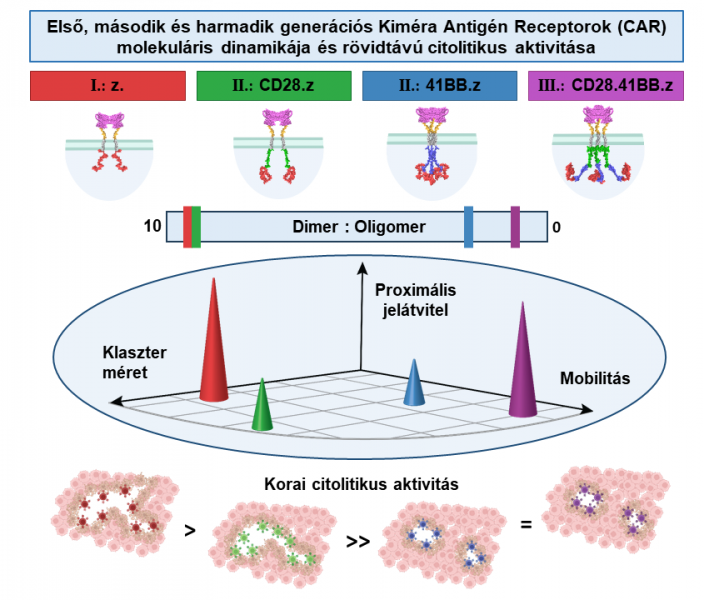
Chimeric antigen receptor (CAR) modified T cells brought a paradigm shift in the treatment of chemotherapy-resistant lymphomas, but clinical experience in the context of solid tumors has been disheartening. While incorporating CD28 or 41BB costimulatory domains into CARs in addition to the CD3z signaling domain improved the long-term efficacy of T cell products, their influence on early tumor engagement has not yet been elucidated. We studied the membrane organization and diffusion kinetics of first (.z), second (CD28.z, 41BB.z), and third (CD28.41BB.z) generation HER2-specific CARs in the resting T cell membrane using super-resolution AiryScan microscopy and fluorescence correlation spectroscopy, in correlation with RoseTTAFold deep learning-based structure prediction and assessment of oligomerization in native Western blot. While .z and CD28.z CARs formed dimers that were organized into large submicron clusters, 41BB containing CARs frequently formed higher oligomers that assembled into smaller clusters. The 1st, 2nd, and 3rd generation CARs showed progressively increasing lateral diffusion as the distance of their CD3z domain from the membrane plane increased. Confocal microscopy analysis of immunological synapses showed that both small clusters of highly mobile CD28.41BB.z and large preformed clusters of less mobile .z CAR induced more efficient proximal signaling than CD28.z or 41BB.z CARs of intermediate mobility. However, electric cell-substrate impedance sensing revealed that the CD28.41BB.z CAR performs the worst in sequential short-term elimination of adherent tumor cells, while the .z CAR is superior to all others. We conclude that the molecular structure, membrane organization, and mobility of CARs are critical design parameters that need to be considered alongside the long-term biological effects of costimulatory domains to achieve an optimal therapeutic effect.
Authors: Marianna Mezősi-Csaplár, Árpád Szöőr, György Vereb
Cancers, 2023, 15(12):3081
DOI: https://doi.org/10.3390/cancers15123081